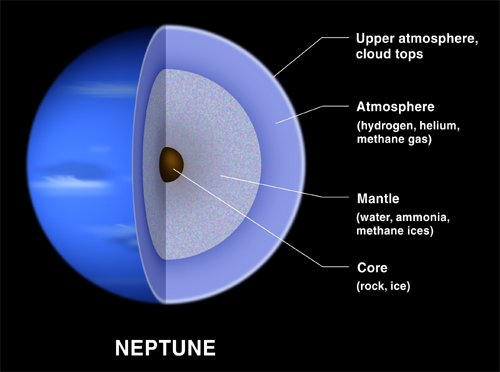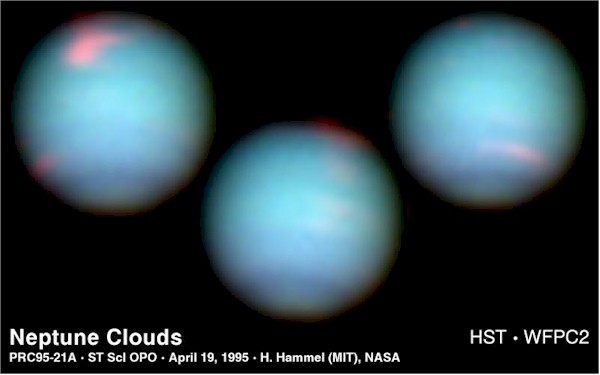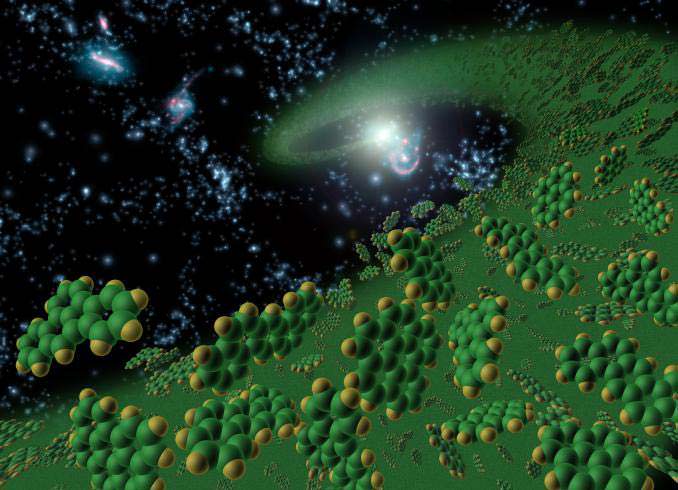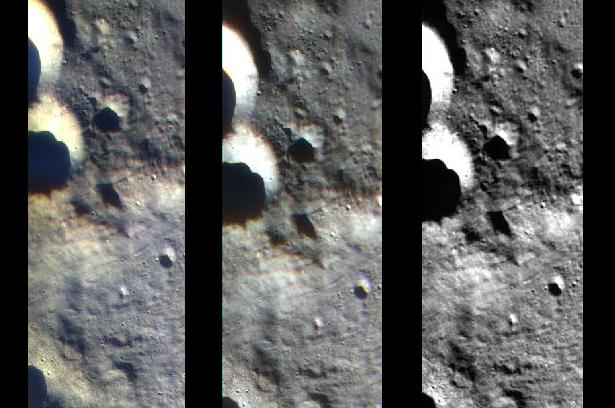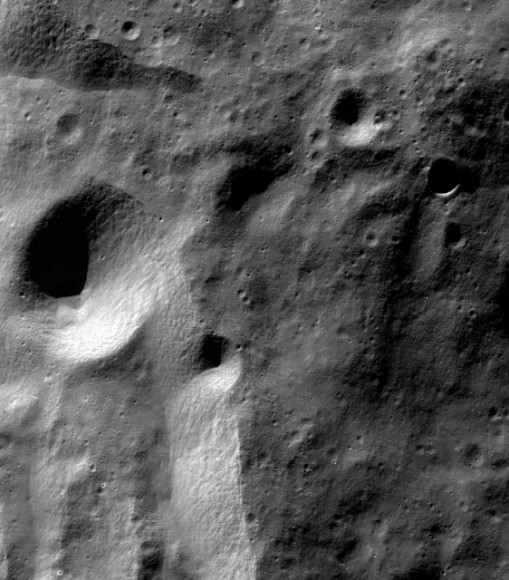Greetings, fellow SkyWatchers! Are you ready for a bit of a challenge this weekend? Then break out the big telescope and let’s go galaxy hunting in Cetus as we have a look at Hickson Compact Group 16. If you’d like to try something a little easier, then “monkey” around with planetary nebula, NGC 246! Got binoculars or a small scope? Then take on NGC 247 – it’s big, bright and beautiful! When ever you’re ready, I’ll see you out under the stars….
Friday, November 28, 2008 – Tonight in 1659, Christian Huygens was busy at the eyepiece – but he wasn’t studying Saturn. This was the first time any astronomer had seen dark markings on Mars! If Huygens and Herschel were alive to enjoy today’s new technology, you could bet they’d have a big backyard scope aimed about four degrees east of the Zeta-Chi pairing in Cetus to have a look at Hickson Compact Galaxy Group 16 (RA 02 09 31 Dec -10 08 59).
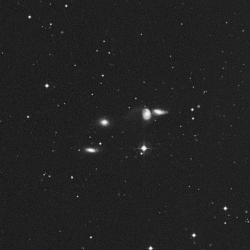 Consisting of four faint, small, galaxies designated as NGCs 835, 833, 838, and 839 clustered around a 9th magnitude star, these aren’t for average equipment – but are a true challenge for a seasoned observer. Groups of galaxies such as Hickson 16 are believed to be some of the very oldest things in our Universe – and this particular assemblage has a reputation for having an extremely large amount of starburst activity. It is also close enough for scientists to study. Its members were all discovered and cataloged by Sir William Herschel on this very night – 223 years ago! The northernmost, NGC 833, is known as H II.482, roughly of magnitude 13, followed by NGC 835 (H II.483) which holds a magnitude of 12. Next in line is NGC 838 (H II.484) at close to magnitude 13, followed by southernmost NGC 839 (H II.485) at magnitude 13. Not easy… But this beautiful crescent of four is worth the effort. If Herschel could do it – so can you!
Consisting of four faint, small, galaxies designated as NGCs 835, 833, 838, and 839 clustered around a 9th magnitude star, these aren’t for average equipment – but are a true challenge for a seasoned observer. Groups of galaxies such as Hickson 16 are believed to be some of the very oldest things in our Universe – and this particular assemblage has a reputation for having an extremely large amount of starburst activity. It is also close enough for scientists to study. Its members were all discovered and cataloged by Sir William Herschel on this very night – 223 years ago! The northernmost, NGC 833, is known as H II.482, roughly of magnitude 13, followed by NGC 835 (H II.483) which holds a magnitude of 12. Next in line is NGC 838 (H II.484) at close to magnitude 13, followed by southernmost NGC 839 (H II.485) at magnitude 13. Not easy… But this beautiful crescent of four is worth the effort. If Herschel could do it – so can you!
 Saturday, November 29, 2008 – Today in 1961 Enos the Chimp launched into fame! His story is a long and colorful one – but Enos was a true astronaut. Selected to make the first American orbital animal flight only three days before the launch, he flew into space on board Mercury-Atlas 5 and completed his first orbit in just under 90 minutes. Although Enos was scheduled to complete three orbits, he was brought back due to “attitude difficulties.” But whose? Malfunctions caused the chimp to be repeatedly shocked when performing the correct maneuvers, but Enos continued to perform flawlessly – and was said to run and jump enthusiastically on board the recovery ship, shaking the hands of the crew.
Saturday, November 29, 2008 – Today in 1961 Enos the Chimp launched into fame! His story is a long and colorful one – but Enos was a true astronaut. Selected to make the first American orbital animal flight only three days before the launch, he flew into space on board Mercury-Atlas 5 and completed his first orbit in just under 90 minutes. Although Enos was scheduled to complete three orbits, he was brought back due to “attitude difficulties.” But whose? Malfunctions caused the chimp to be repeatedly shocked when performing the correct maneuvers, but Enos continued to perform flawlessly – and was said to run and jump enthusiastically on board the recovery ship, shaking the hands of the crew.
Although he died a year later from an unrelated disease which could not be cured at the time, Enos the chimp remains one of our most enduring space heroes. Tonight let’s monkey around with a planetary nebula as we’ll take a look at 8th magnitude NGC 246 about five degrees north of Beta Ceti.
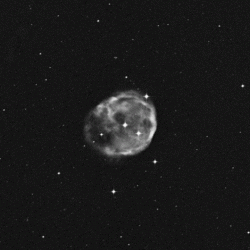 On the large side as planetaries go, this variegated shell of gas envelops a dying star about 1600 light-years away. Once upon a time, the star was much like our Sun, but over thousands of years its atmosphere expanded, interacting with the gas and dust in the interstellar medium to create what you see tonight. With the outer shell visible to even small telescopes, larger aperture can spot the fainter member of the binary at the heart of this planetary…a star well on it’s way to becoming a white dwarf.
On the large side as planetaries go, this variegated shell of gas envelops a dying star about 1600 light-years away. Once upon a time, the star was much like our Sun, but over thousands of years its atmosphere expanded, interacting with the gas and dust in the interstellar medium to create what you see tonight. With the outer shell visible to even small telescopes, larger aperture can spot the fainter member of the binary at the heart of this planetary…a star well on it’s way to becoming a white dwarf.
Discovered by Sir William Herschel, it is often referred to as the “Skull” nebula, but perhaps tonight you’ll see the smiling face of Enos forever leaving its mark on space!
Sunday, November 30, 2008 – Just as a curiosity, on this day in 1954, Elizabeth Hodges was struck by a five kilogram meteorite in Alabama. Duck! If you’re out at sunset tonight, you’ll be struck by the beauty of the slender crescent Moon illuminated by Earthshine. Not far away, look for the pairing of Venus and Jupiter, because things are going to get a lot cozier as the last month of the year begins!
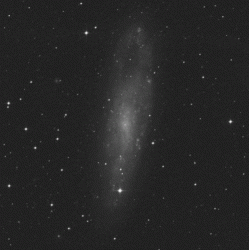 Before the Moon once again interferes with study, last take one last look at Cetus before we move on. Our last target is a beauty – one which can be seen with larger binoculars, is easy with a small telescope, and becomes breathtaking with large aperture. Set your sights on bright Beta and drop less than three degrees south-southeast for NGC 247 (RA 00 47 09 Dec -20 45 38)…
Before the Moon once again interferes with study, last take one last look at Cetus before we move on. Our last target is a beauty – one which can be seen with larger binoculars, is easy with a small telescope, and becomes breathtaking with large aperture. Set your sights on bright Beta and drop less than three degrees south-southeast for NGC 247 (RA 00 47 09 Dec -20 45 38)…
As one of the largest members of a group of galaxies located around our galactic south pole, NGC 247 seems to be standing still in space – at a distance of six to eight million light-years. At its core is a near stellar-sized nucleus – a bright, central mass of stars which dominates its patchy looking structure. Look closely at its northern edge, for NGC 247 sports a huge area of dark, obscuring dust – or what may just be an empty space between its clouds of stars. Note a bright star caught on its southern flank.
While you may find this low surface brightness galaxy a bit difficult unless you stick with the most minimal of magnification, you can not only congratulate yourself for capturing another Herschel “400” object, but Bennett 3 as well.
Until next week? As for the Moon… But keep on reaching for the stars!
This week’s awesome photos are: Hickson 16 – Credit: Palomar Observatory, courtesy of Caltech, Enos (and handler) – Credit: NASA, NGC 246 (south is up) – Credit: Palomar Observatory, courtesy of Caltech and NGC 247 – Credit: Palomar Observatory, courtesy of Caltech. We thank you so much!



